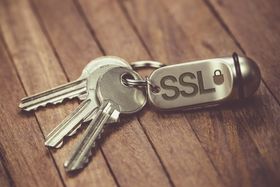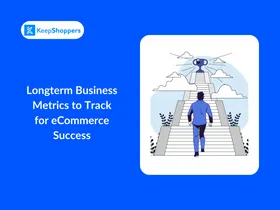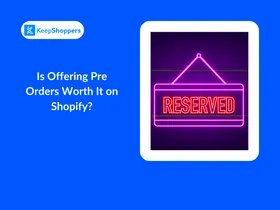How to Increase the Average Order Value in Your Shopify Store
Updated February 10, 2023

AI Summary
As an e-commerce store owner, you should always be finding ways to increase your average order value (AOV), and even better, increasing it without a burden on your profits.
In this post, we will cover a few techniques that merchants can use to grow their store's AOV. But before we start, let's first make sure that we're clear on what AOV is, how to calculate it, and why it's important to increase it.
What is the Average Order Value in eCommerce?
When we talk about The AOV, we refer to the amount of revenue divided by the number of purchases in any given date range. For example, if during January your Shopify store had 1,000 orders of $100,000 in total, you would calculate your AOV as follows:
100,000 : 1, 000 = $100
This means that the average purchase during January was $100. Pretty simple, right?
Why Is It So Important to Increase the Average Order Value of Your Store?
Running an eCommerce business involves much different expertise from marketing and branding to shipping and inventory management. But at the end of the day, when you analyze your business's performance, it's all about the numbers. And while most sellers focus on increasing traffic and conversion rates, we shouldn't miss out on the opportunity to grow revenues by increasing AOV.
An eComm sales funnel is comprised of a few steps -
- Awareness (how many people are exposed to your brand or products).
- Traffic (how many visitors arrive at your site).
- View product.
- Add to cart.
- Place an order.
- Offer upsells.
- Complete purchase.
Since every step in the funnel affects the following one, improving any step can have an incremental effect. When you if in the example above we'd increase AOV by just $10, from $100 to $110, that would be multiplied by the number of orders (1,000) and would mean $10,000 more revenue for the business.
So, the more orders the business has, the more significant an increase in AOV is. And while it can often be tough to increase traffic or conversion rates, many merchants can get a better bang for their buck by improving AOV.
Methods for increasing the Average Order Value
There are several methods that store owners use to increase their AOV. A good place to start is to analyze your sales data and see what kind of patterns you can find in previous orders. Thereafter you can put a strategy together to cover the following methods.
Upselling
Upselling is a method of getting a customer to purchase an upgraded version of the product they've put in their cart. Make sure your upgrade is beneficial to the customer and that they can see the value in spending a little more money for something similar to what they originally wanted to purchase.
Cross-selling
Cross-selling is a method of bundling products together. A good example of this would be a jewelry store selling pendants and then trying to get the customer to add a necklace when they add the pendant to their basket.
Free delivery
Adding a minimum order amount to get customers to up their basket sizes is a great way to increase AOV.
Other options
There are a few other methods like adding discounts to higher-margin products, enabling customers to get free delivery or other discounts on their first order, and setting up loyalty programs. Another old trick that has been used in walk-in retail in the past is the "isle of death" when queuing to get to the till to pay. In the same manner, you could place certain upsell and cross-sell products on the checkout place to try and entice customers to add further items to their basket as they are about to checkout.
The importance of accurate assessments
It is imperative always to make sure that your costs and margins assessment is correct before applying any of the approaches I've mentioned above. Implementing them wrong could cost you more than the benefit you land up getting out of it.





